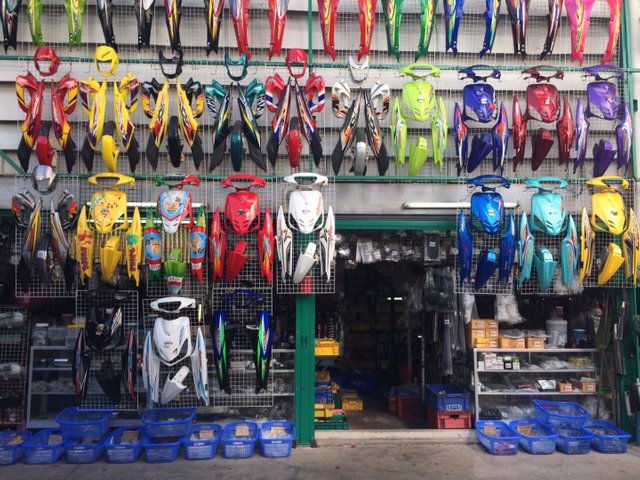Discover Top Quality Moto Parts NZ for All Your Motorcycle Requirements
Discover Top Quality Moto Parts NZ for All Your Motorcycle Requirements
Blog Article
Mastering Motorcycle Gears: How to Optimize Your Riding Experience
In the realm of motorcycling, mastering the art of equipment adjustment is essential for enhancing your riding performance. Effectively making use of and understanding bike gears can considerably influence acceleration, control, and gas efficiency, changing a typical ride into a smooth, thrilling journey.
Understanding Gear Mechanics
How do the intricacies of equipment technicians affect motorbike performance? At the core of bike dynamics, gear mechanics play a crucial role in transforming engine power right into activity, eventually dictating rate and control. Gears, diligently crafted components, enable motorcyclists to optimize torque and rate, guaranteeing a seamless transition with different terrains and velocities. The equipment proportions, meticulously developed, determine the connection between engine revolutions and wheel turns, impacting velocity and gas effectiveness.
Understanding gear technicians begins with identifying the value of the gearbox, which houses multiple equipments of differing sizes. These gears communicate with a process understood as meshing, where teeth of different gears engage to transfer power.
Additionally, the concept of gear changing is essential to optimizing efficiency. Smooth and timely shifts make certain that the engine operates within its ideal power band, stopping unneeded stress and enhancing longevity (mx parts nz). By comprehending these mechanical complexities, riders can achieve an unified blend of power, control, and efficiency, elevating their riding experience
Timing Your Changes
Shift timing proficiency is vital for optimizing bike performance and boosting the riding experience. Appropriately timed changes ensure that the engine operates within its optimal power band, which is critical for keeping control, achieving smooth acceleration, and making certain the long life of the bike. Bikers need to create an user-friendly feeling of when to move gears, which entails recognizing the connection between engine changes per minute (RPM) and speed.
To master change timing, pay very close attention to the engine's sound and feel, as these supply crucial hints regarding when to change gears. The ideal change factor generally occurs when the engine comes close to the upper series of its power band without getting to the redline. Changing prematurely can lead to an absence of power, while changing as well late may create unnecessary engine pressure
Additionally, road conditions and riding design influence change timing. In contrast, throughout highway riding, fewer changes at greater rates can be more suitable.
Enhancing Gas Performance
While understanding bike gears is crucial for performance, boosting fuel performance is equally important for both economic and environmental reasons. Ideal gas intake not only decreases functional prices but likewise decreases the eco-friendly footprint of riding. To accomplish this, one should understand the complex relationship between gear selection and engine efficiency.
Riding in a higher gear at reduced rates can lead to engine lugging, which is detrimental to both fuel economic climate and engine health and wellness. Alternatively, riding in lower equipments at high rates results in unneeded fuel consumption.
In addition, routine upkeep plays a crucial duty in fuel efficiency. Making certain that the bike is well-tuned, with clean air filters and appropriately blew up tires, can enhance aerodynamics and decrease gas wastefulness. Embracing a riding style that accepts progressive velocity and smooth deceleration can add to better fuel economic climate.

Techniques for Smooth Transitions
Achieving smooth gear transitions is essential to enhancing the riding experience and making sure the longevity of a bike's transmission system. Correct gear shifting not only adds to a seamless adventure but additionally decreases damage on the mechanical parts. To master the art of smooth transitions, motorcyclists need to concentrate on a couple of crucial techniques.

Secondly, clutch control plays an essential function. Involving and disengaging the clutch efficiently needs method. The clutch bar ought to be released slowly, enabling for a smooth transfer of power from the engine to the wheels without triggering a jolt or sudden activity.

Adjusting to Roadway Conditions
Navigating varied road problems is a vital skill for any motorcyclist aiming to maintain control and safety. Whether you're riding on wet surfaces, gravel roads, or navigating doglegs, your capacity to adjust your gear usage and riding strategy is extremely important. Recognizing just how to adjust your equipments appropriately can considerably affect grip and stability, guaranteeing a safer trip.
In contrast, when riding on gravel or uneven surface, lower gears are more suitable. Lower equipments provide better control and allow you to react more quickly to unforeseen changes in the road surface area.
Sharp curves demand exact equipment administration to stabilize rate and control. Downshifting prior to entering a contour can assist maintain energy while ensuring the bike remains stable throughout the turn. Constant practice in diverse conditions improves your capability to respond and anticipate to adjustments in roadway appearance and incline.
Conclusion
Understanding motorcycle equipments dramatically enhances the riding experience by enhancing acceleration, control, and gas efficiency. Adapting equipment option to different road problems, such as using greater gears on wet surface areas and lower equipments on crushed rock, more enhances handling and security.
Recognizing equipment mechanics begins with identifying the relevance of the transmission, which houses several gears of varying dimensions. These gears communicate via a procedure recognized as meshing, where teeth of different equipments engage to transfer power (mx gear nz). Mild changes to the throttle throughout gear changes can stop jerky activities and keep a consistent riding rate
Whether you're riding on wet surfaces, crushed rock roadways, or navigating sharp turns, your capacity to adjust your equipment usage and riding technique is critical. Adjusting gear selection to numerous roadway conditions, such as using higher gears on damp surfaces and reduced gears on gravel, further improves handling and safety and security.
Report this page